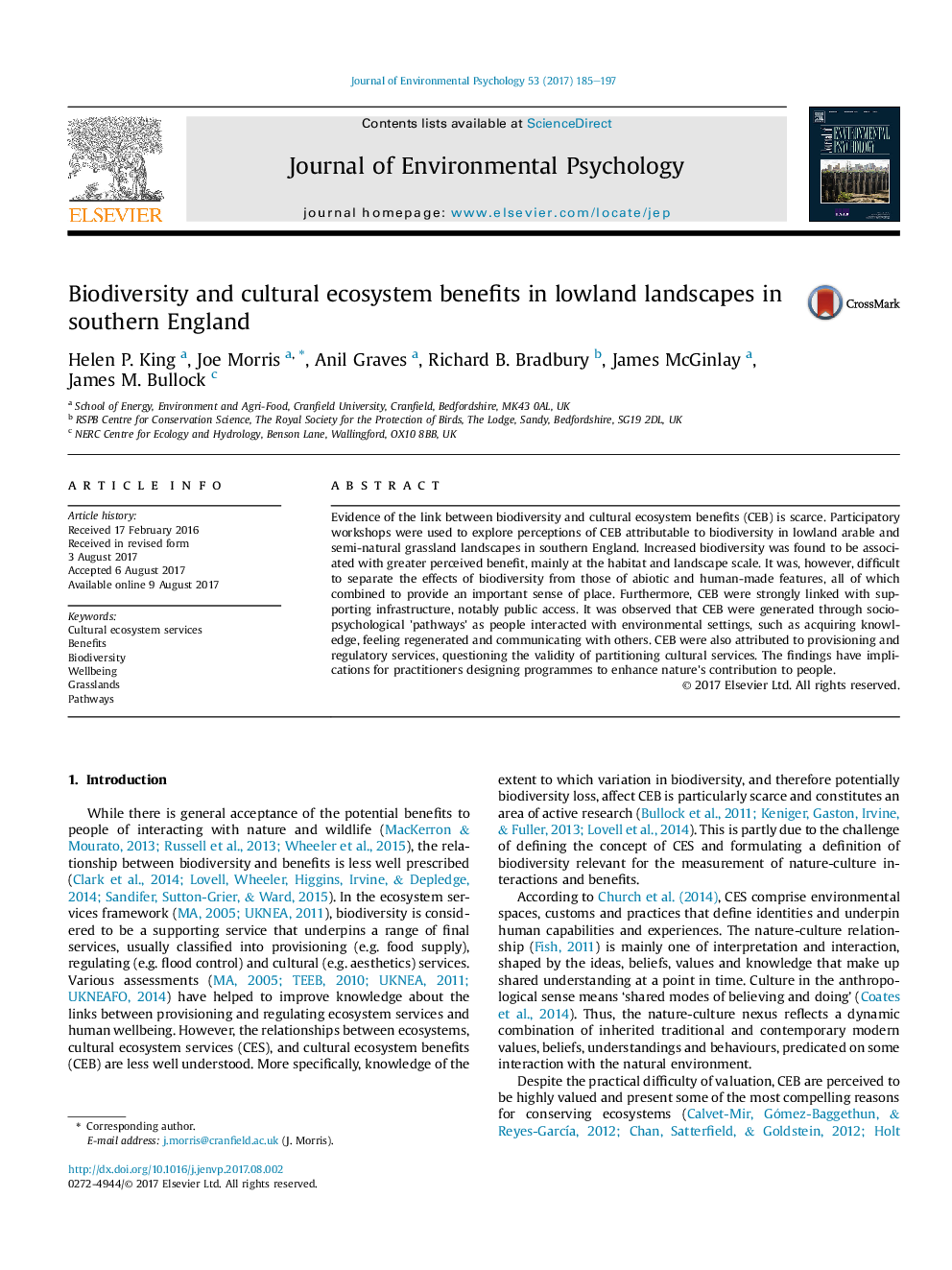| Article ID | Journal | Published Year | Pages | File Type |
|---|---|---|---|---|
| 5034890 | Journal of Environmental Psychology | 2017 | 13 Pages |
â¢People perceive biodiversity mainly at the habitat and landscape scale.â¢Cultural ecosystem benefits involve a mix of biotic, abiotic and man-made features.â¢Cultural ecosystem benefits are generated through socio-psychological 'pathways'.â¢Cultural benefits and biodiversity are positively associated.â¢People attach cultural value to provisioning and regulating ecosystem services.
Evidence of the link between biodiversity and cultural ecosystem benefits (CEB) is scarce. Participatory workshops were used to explore perceptions of CEB attributable to biodiversity in lowland arable and semi-natural grassland landscapes in southern England. Increased biodiversity was found to be associated with greater perceived benefit, mainly at the habitat and landscape scale. It was, however, difficult to separate the effects of biodiversity from those of abiotic and human-made features, all of which combined to provide an important sense of place. Furthermore, CEB were strongly linked with supporting infrastructure, notably public access. It was observed that CEB were generated through socio-psychological 'pathways' as people interacted with environmental settings, such as acquiring knowledge, feeling regenerated and communicating with others. CEB were also attributed to provisioning and regulatory services, questioning the validity of partitioning cultural services. The findings have implications for practitioners designing programmes to enhance nature's contribution to people.
